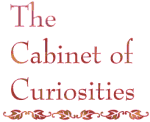
|
| |
| By Antoinette de Morton | ||
| Third Section - Second Drawer | ||
Winning weapons and beyondIn World War I, Australian geologists led tunnelling teams in the trenches, while Australian chemists worked in British munitions factories. By World War II, the picture was radically different. The need for defence self-reliance had prompted the expansion of Australia's manufacturing capacity in the 1930s, a process radically accelerated by the war. After a slow start, scientists found their skills in demand - Australia's physicists, for example, helped develop an optical munitions industry from scratch.This reorientation in research reshaped Australian science and opened opportunities. CSIR's first secondary industry related research division was established - the Division of Industrial Chemistry - establishing itself as an internationally recognised centre in the postwar era. Most dramatically, radar researchers turned their aerials to the sun and stars, playing a leading role in the creation of the new field of radioastronomy. WWII also brought the atomic bomb. The lingering strength of imperial presumptions was displayed when Australia agreed to host Britain's bomb tests without bargaining for any formal scientific involvement. Australia once again was just a provider of raw materials. |
[ The Cabinet | Bright Sparcs | ASAPWeb ]
Prepared by Tim Sherratt (Tim.Sherratt@asap.unimelb.edu.au)
for publication on ASAPWeb, 9 March 1997.
